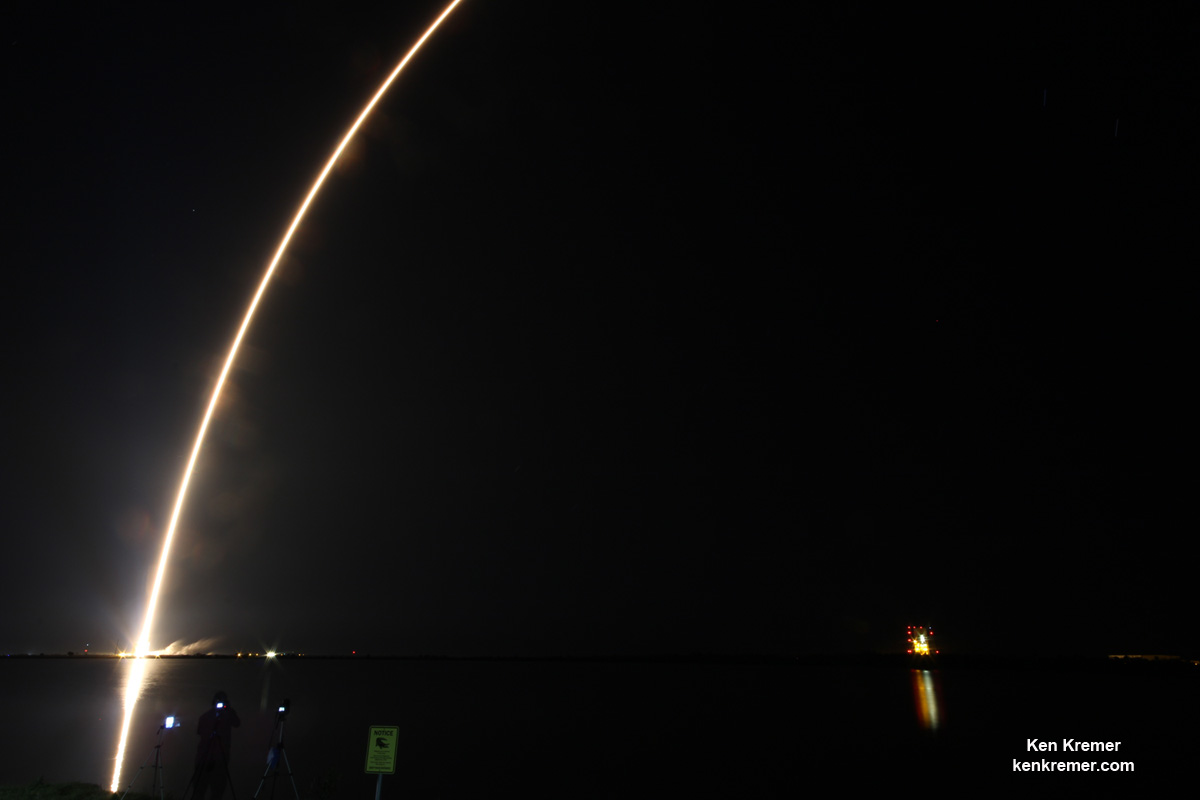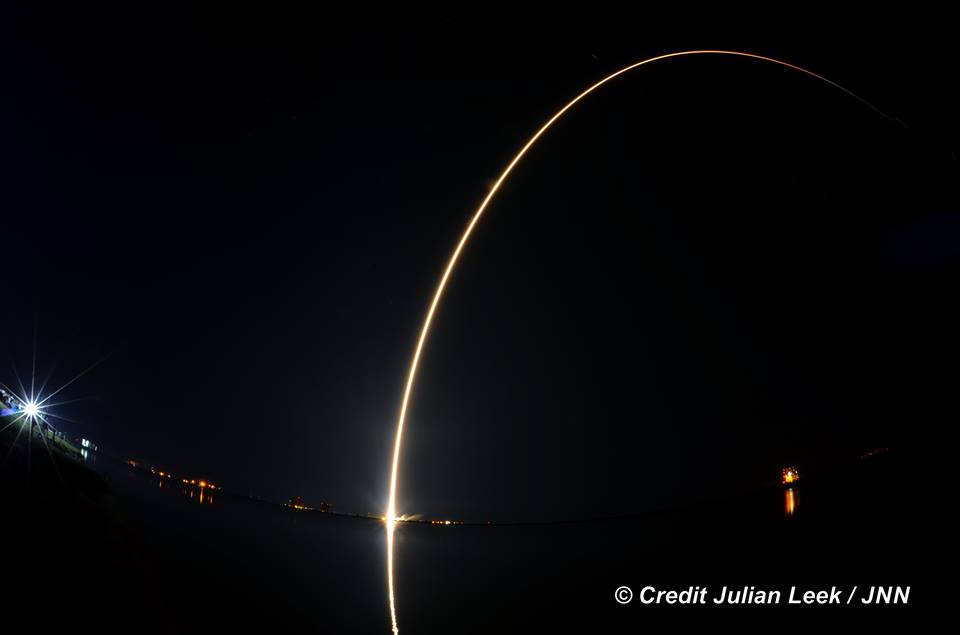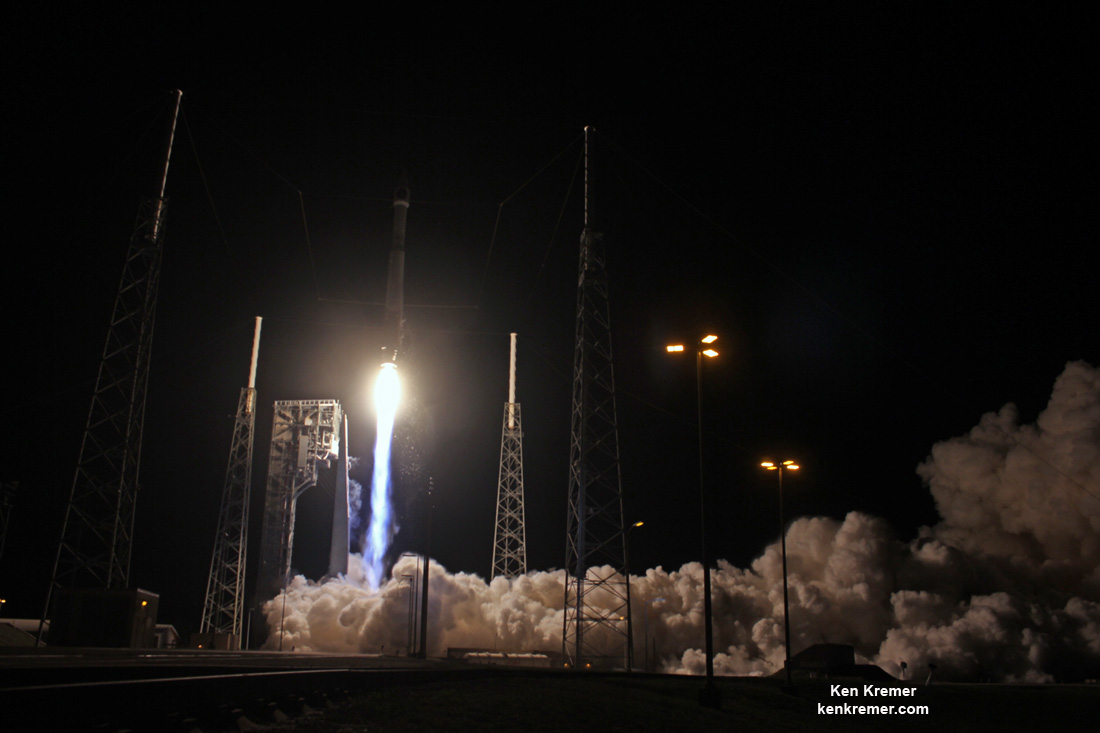

| Online: | |
| Visits: | |
| Stories: |

| Story Views | |
| Now: | |
| Last Hour: | |
| Last 24 Hours: | |
| Total: | |
USAF Missile Defense SBIRS Observatory Streaks to Orbit During Spectacular Evening Blastoff

ULA Atlas V rocket carrying the USAF SBIRS GEO 3 missile defense satellite streaks to orbit on Jan. 20, 2017 after nighttime blastoff at 7:42 p.m. ET from Space Launch Complex-41 at Cape Canaveral Air Force Station in Florida. Credit: Ken Kremer/kenkremer.com
CAPE CANAVERAL AIR FORCE STATION, FL – A U.S. Air Force missile defense reconnaissance observatory that will track the telltale infrared signatures of incoming enemy missiles and is vital to America’s national security blasted off in spectacular fashion off this evening, Jan. 20, 2017, as it streaked to orbit from the Florida Space Coast.
The United Launch Alliance Atlas V rocket carrying the $1.2 Billion SBIRS GEO Flight 3 infrared imaging satellite lifted off at 7:42 p.m. ET from Space Launch Complex-41 on Cape Canaveral Air Force Station, Fla. – marking the first US east coast launch of 2017.
It is also the first of at least eleven launches of Atlas and Delta rockets by the aerospace firm this year.
The on time launch took place at the opening of the 40 minute launch window and after a 24 hour delay – when the launch was scrubbed yesterday (Jan. 19) after an aircraft flew into the Cape’s restricted airspace and could not be diverted in time before the launch window closed.
ULA also had to address sensor issues with the Atlas rocket during Thursday’s countdown.

ULA Atlas V rocket carrying the USAF SBIRS GEO 3 missile defense satellite streaks to orbit on Jan. 20, 2017 after nighttime blastoff at 7:42 p.m. ET from Space Launch Complex-41 at Cape Canaveral Air Force Station in Florida. Credit: Julian Leek
The SBIRS GEO Flight 3 is considered to be one of the highest priority military space programs in defense of the homeland.

A United Launch Alliance (ULA) Atlas V rocket carrying SBIRS GEO Flight 3 satellite lifts off at 7:42 p.m. ET on Jan. 20, 2017 from Space Launch Complex-41 on Cape Canaveral Air Force Station in Florida. Credit: Ken Kremer/kenkremer.com
The Space Based Infrared System is designed to provide global, persistent, infrared surveillance capabilities to meet 21st century demands in four national security mission areas: missile warning, missile defense, technical intelligence and battlespace awareness.
Watch this video showing the detailed mission profile:
Video Caption: An Atlas V 401 configuration rocket will deliver the Air Force’s third Space-Based Infrared System (SBIRS) satellite to orbit. SBIRS, considered one of the nation’s highest priority space programs, is designed to provide global, persistent, infrared surveillance capabilities to meet 21st century demands. Credit: ULA
ULA is a joint venture of Boeing and Lockheed Martin with 116 successful launches under its belt after today’s liftoff.
The 194-foot-tall commercial Atlas V booster launched in the 401 rocket configuration with approximately 860,000 pounds of sea level first stage thrust powered by the dual nozzle Russian-built RD AMROSS RD-180 engine. There are no thrust augmenting solids attached to the first stage.
The satellite is housed inside a 4-meter diameter large payload fairing (LPF). The Centaur upper stage is powered by the Aerojet Rocketdyne RL10C engine.
This mission marks the 34th Atlas V mission in the 401 configuration.
The two prior SBIRS GEO missions also launched on the ULA Atlas V 401 rocket.
The SBIRS team is led by the Remote Sensing Systems Directorate at the U.S. Air Force Space and Missile Systems Center. Lockheed Martin is the prime contractor, with Northrop Grumman as the payload integrator. Air Force Space Command operates the SBIRS system, according to a ULA description.
Stay tuned here for Ken’s continuing Earth and Planetary science and human spaceflight news.

Artwork for ULA Atlas V launch of SBIRS GEO Flight 3 mission on Jan. 19, 2017 from Canaveral Air Force Station, Florida. Credit: ULA
The post USAF Missile Defense SBIRS Observatory Streaks to Orbit during Spectacular Evening Blastoff appeared first on Universe Today.
Source: http://www.universetoday.com/132922/usaf-missile-defense-sbirs-observatory-streaks-orbit-spectacular-evening-blastoff/


